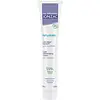What's inside
What's inside
 Key Ingredients
Key Ingredients

No key ingredients
 Benefits
Benefits

 Concerns
Concerns

 Ingredients Side-by-side
Ingredients Side-by-side

Water
Skin ConditioningGlycerin
HumectantPropylene Glycol Dicaprylate/Dicaprate
EmollientC14-22 Alcohols
Emulsion StabilisingDimethicone
EmollientIsocetyl Stearoyl Stearate
EmollientTriethylhexanoin
Masking1,2-Hexanediol
Skin ConditioningPolymethyl Methacrylate
Potassium Cetyl Phosphate
EmulsifyingAcrylates/C10-30 Alkyl Acrylate Crosspolymer
Emulsion StabilisingBenzoic Acid
MaskingC12-20 Alkyl Glucoside
EmulsifyingParfum
MaskingHydroxyethyl Acrylate/Sodium Acryloyldimethyl Taurate Copolymer
Emulsion StabilisingPhytosterols
Skin ConditioningPolysorbate 60
EmulsifyingSclerotium Gum
Emulsion StabilisingSodium Hydroxide
BufferingSorbitan Isostearate
EmulsifyingSqualane
EmollientWater, Glycerin, Propylene Glycol Dicaprylate/Dicaprate, C14-22 Alcohols, Dimethicone, Isocetyl Stearoyl Stearate, Triethylhexanoin, 1,2-Hexanediol, Polymethyl Methacrylate, Potassium Cetyl Phosphate, Acrylates/C10-30 Alkyl Acrylate Crosspolymer, Benzoic Acid, C12-20 Alkyl Glucoside, Parfum, Hydroxyethyl Acrylate/Sodium Acryloyldimethyl Taurate Copolymer, Phytosterols, Polysorbate 60, Sclerotium Gum, Sodium Hydroxide, Sorbitan Isostearate, Squalane
Water
Skin ConditioningAnthemis Nobilis Flower Water
MaskingHamamelis Virginiana Water
AstringentMalva Sylvestris Extract
AstringentDicaprylyl Carbonate
EmollientGlycerin
HumectantCaprylic/Capric Triglyceride
MaskingCoco-Caprylate/Caprate
EmollientCetearyl Alcohol
EmollientArachidyl Glucoside
EmulsifyingBentonite
AbsorbentArachidyl Alcohol
EmollientSodium Levulinate
Skin ConditioningGlyceryl Stearate Citrate
EmollientParfum
MaskingSodium Stearoyl Glutamate
CleansingCetearyl Glucoside
EmulsifyingBehenyl Alcohol
EmollientXanthan Gum
EmulsifyingSodium Benzoate
MaskingGlyceryl Caprylate
EmollientGlyceryl Undecylenate
EmollientPhytic Acid
Lactic Acid
BufferingTocopherol
AntioxidantHelianthus Annuus Seed Oil
EmollientSodium Hydroxide
BufferingGlycine Soja Oil
EmollientWater, Anthemis Nobilis Flower Water, Hamamelis Virginiana Water, Malva Sylvestris Extract, Dicaprylyl Carbonate, Glycerin, Caprylic/Capric Triglyceride, Coco-Caprylate/Caprate, Cetearyl Alcohol, Arachidyl Glucoside, Bentonite, Arachidyl Alcohol, Sodium Levulinate, Glyceryl Stearate Citrate, Parfum, Sodium Stearoyl Glutamate, Cetearyl Glucoside, Behenyl Alcohol, Xanthan Gum, Sodium Benzoate, Glyceryl Caprylate, Glyceryl Undecylenate, Phytic Acid, Lactic Acid, Tocopherol, Helianthus Annuus Seed Oil, Sodium Hydroxide, Glycine Soja Oil
 Reviews
Reviews

Ingredients Explained
These ingredients are found in both products.
Ingredients higher up in an ingredient list are typically present in a larger amount.
Glycerin is already naturally found in your skin. It helps moisturize and protect your skin.
A study from 2016 found glycerin to be more effective as a humectant than AHAs and hyaluronic acid.
As a humectant, it helps the skin stay hydrated by pulling moisture to your skin. The low molecular weight of glycerin allows it to pull moisture into the deeper layers of your skin.
Hydrated skin improves your skin barrier; Your skin barrier helps protect against irritants and bacteria.
Glycerin has also been found to have antimicrobial and antiviral properties. Due to these properties, glycerin is often used in wound and burn treatments.
In cosmetics, glycerin is usually derived from plants such as soybean or palm. However, it can also be sourced from animals, such as tallow or animal fat.
This ingredient is organic, colorless, odorless, and non-toxic.
Glycerin is the name for this ingredient in American English. British English uses Glycerol/Glycerine.
Learn more about GlycerinParfum is a catch-all term for an ingredient or more that is used to give a scent to products.
Also called "fragrance", this ingredient can be a blend of hundreds of chemicals or plant oils. This means every product with "fragrance" or "parfum" in the ingredients list is a different mixture.
For instance, Habanolide is a proprietary trade name for a specific aroma chemical. When used as a fragrance ingredient in cosmetics, most aroma chemicals fall under the broad labeling category of “FRAGRANCE” or “PARFUM” according to EU and US regulations.
The term 'parfum' or 'fragrance' is not regulated in many countries. In many cases, it is up to the brand to define this term.
For instance, many brands choose to label themselves as "fragrance-free" because they are not using synthetic fragrances. However, their products may still contain ingredients such as essential oils that are considered a fragrance by INCI standards.
One example is Calendula flower extract. Calendula is an essential oil that still imparts a scent or 'fragrance'.
Depending on the blend, the ingredients in the mixture can cause allergies and sensitivities on the skin. Some ingredients that are known EU allergens include linalool and citronellol.
Parfum can also be used to mask or cover an unpleasant scent.
The bottom line is: not all fragrances/parfum/ingredients are created equally. If you are worried about fragrances, we recommend taking a closer look at an ingredient. And of course, we always recommend speaking with a professional.
Learn more about ParfumSodium Hydroxide is also known as lye or caustic soda. It is used to adjust the pH of products; many ingredients require a specific pH to be effective.
In small amounts, sodium hydroxide is considered safe to use. However, large amounts may cause chemical burns due to its high alkaline.
Your skin has a natural pH and acid mantle. This acid mantle helps prevent harmful bacteria from breaking through. The acid mantle also helps keep your skin hydrated.
"Alkaline" refers to a high pH level. A low pH level would be considered acidic.
Learn more about Sodium HydroxideWater. It's the most common cosmetic ingredient of all. You'll usually see it at the top of ingredient lists, meaning that it makes up the largest part of the product.
So why is it so popular? Water most often acts as a solvent - this means that it helps dissolve other ingredients into the formulation.
You'll also recognize water as that liquid we all need to stay alive. If you see this, drink a glass of water. Stay hydrated!
Learn more about Water